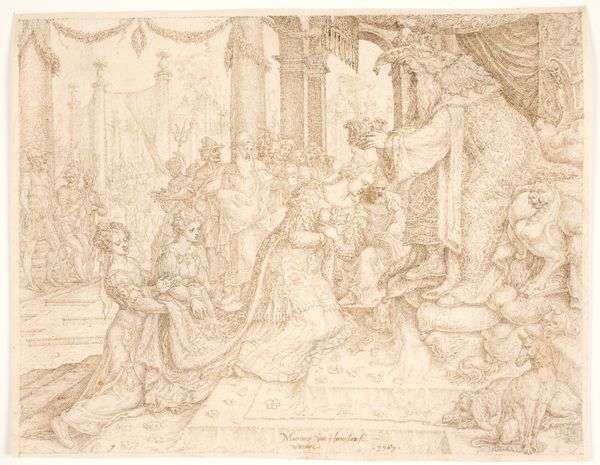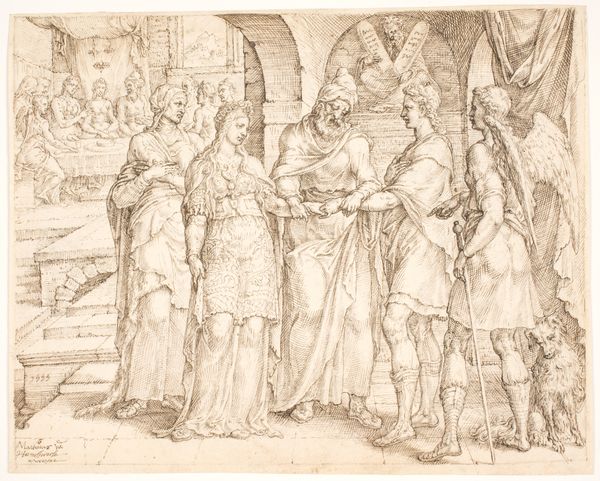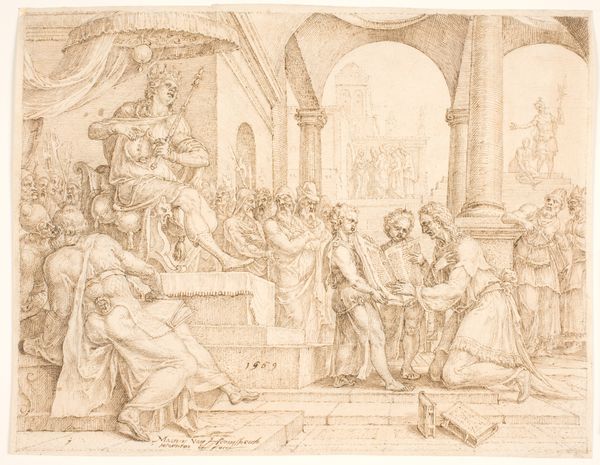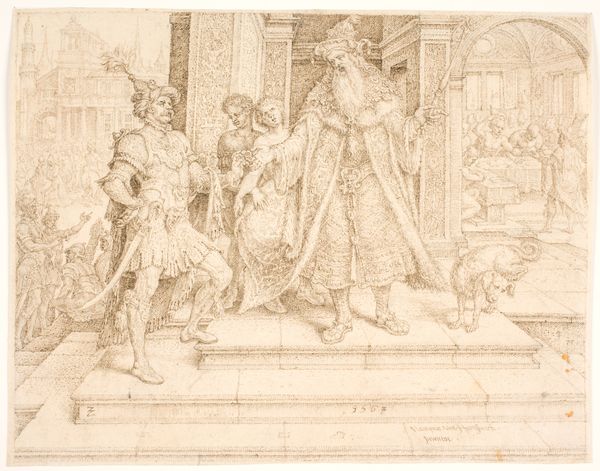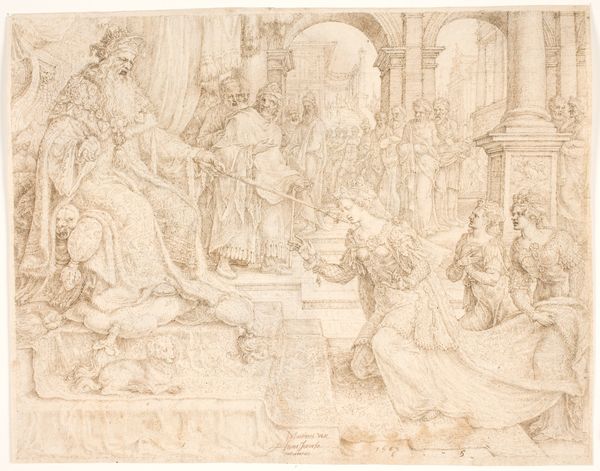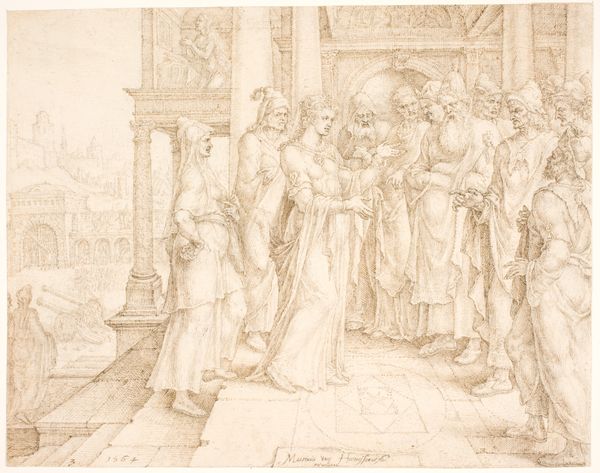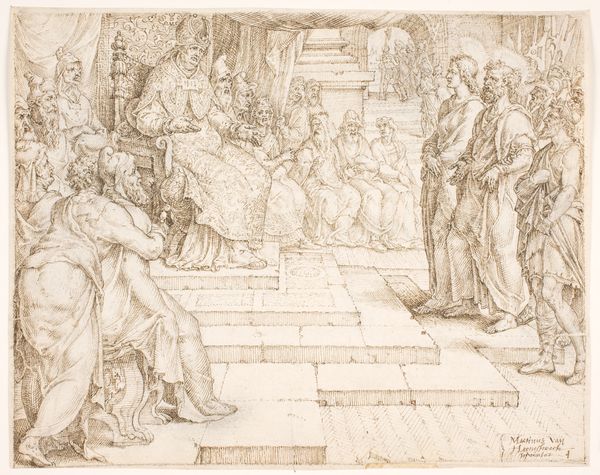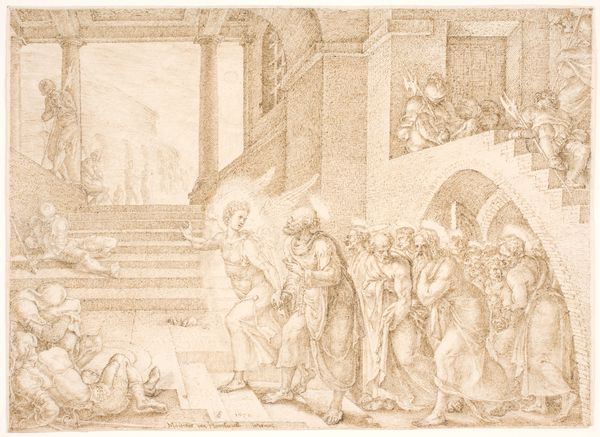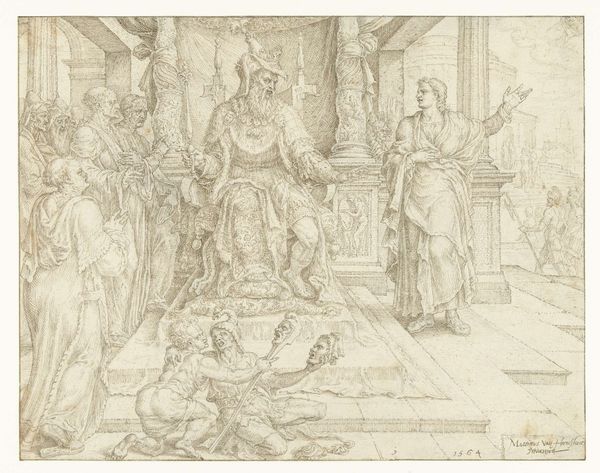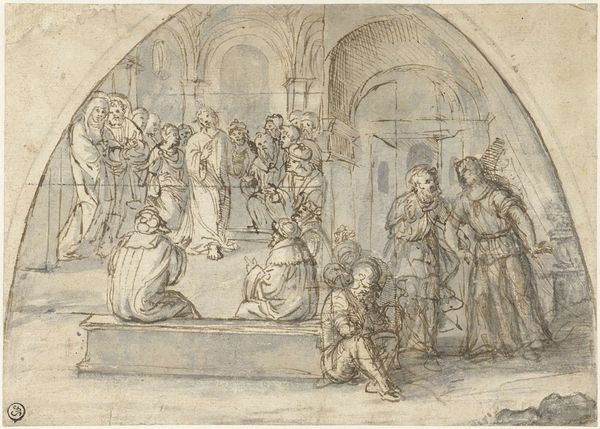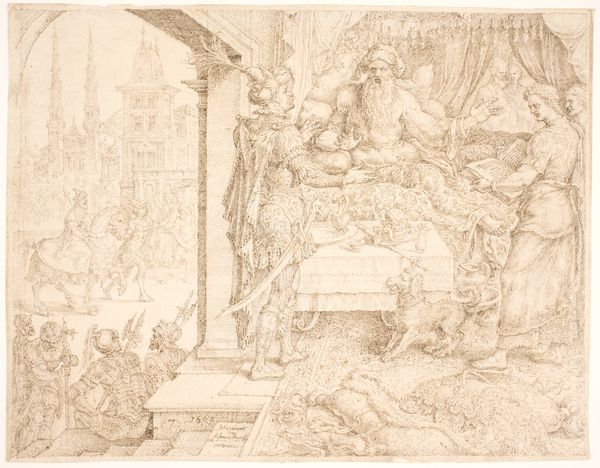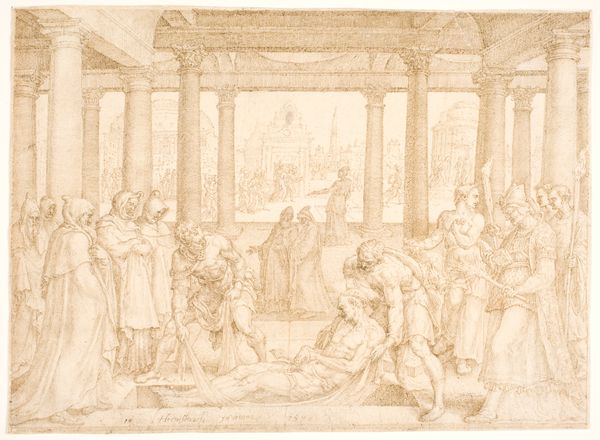
Den hellige Stefanus stilles for ypperstepræsten 1572
0:00
0:00
drawing, engraving
#
drawing
#
etching
#
figuration
#
11_renaissance
#
history-painting
#
northern-renaissance
#
academic-art
#
engraving
Dimensions: 200 mm (height) x 275 mm (width) (bladmaal)
Curator: Before us is a Northern Renaissance drawing executed in engraving. Dating to 1572, it is entitled "Den hellige Stefanus stilles for ypperstepr\u00e6sten" or "The Holy Stephen Presented Before the High Priest," by Maarten van Heemskerck. Editor: My first impression is one of stark formality. Despite the delicate medium, the composition feels rigid, almost legalistic, amplified by the architectural backdrop. Curator: Indeed. Note how van Heemskerck employs the classical architecture - the columns, the distant Romanesque cityscape - not merely as backdrop but as a structured stage. It speaks to Renaissance interests in order and the rediscovery of antiquity, using those forms to amplify narrative. Editor: Absolutely. And within that framework, observe the characters themselves. Stephen, front and center, his stance submissive, yet his hands clasped almost defiantly in prayer. Consider also the guards, their armour ornate, but their faces masked, devoid of empathy. This visual tension pulls the viewer in. It also lends this work with multiple allusions - like the dog reclining passively by the staircase - as metaphors for moral order. Curator: Van Heemskerck utilizes precise lines to differentiate textures—the gleam of metal, the drape of cloth, the smoothness of skin. The meticulousness invites deep reading, focusing not on painterly gesture, but pictorial legibility. Editor: And the iconography itself reinforces the composition. Stephen's placement before the High Priest mirrors a long tradition of sacrifice. That positioning speaks to both his condemnation and sanctification. It evokes cultural narratives surrounding unjust persecution. Curator: The print also displays a sophisticated awareness of its distribution context. This was, after all, designed to be disseminated and reproduced. Heemskerck clearly designed the composition in layers. It is organized to reveal itself through focused attention. Editor: Thinking about how the symbols communicate is impactful. I’m particularly struck by the quiet dignity conveyed by the work, in spite of it being, after all, a courtroom scene. Curator: By foregrounding compositional precision and perspectival order, Van Heemskerck compels us to actively parse layers of meaning in every gesture. It demands careful observation, like textual reading. Editor: Agreed. I see in this presentation before us today how culturally relevant, even politically charged, are themes of persecution and piety and those endure powerfully across epochs.
Comments
No comments
Be the first to comment and join the conversation on the ultimate creative platform.
